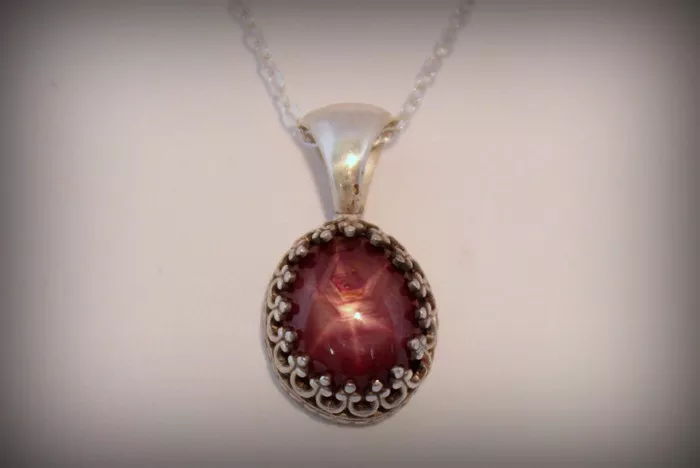Ruby, the fiery red gemstone, has long been prized for its intense color and rarity. Often considered the king of gemstones, rubies have adorned the crowns of monarchs and have been coveted by collectors and jewelry enthusiasts alike. But is natural ruby jewelry worth the investment? In this article, we will explore the factors that contribute to the value of rubies, the benefits of investing in natural ruby jewelry, and what to look for when purchasing these stunning gems.
The Allure of Rubies
Historical Significance
Rubies have been valued for thousands of years, dating back to ancient civilizations. They were believed to possess protective powers and were often worn by warriors going into battle. In Hindu culture, rubies are referred to as “ratnaraj,” meaning “king of precious stones,” and are considered to bring good fortune to their owners. The gemstone’s association with royalty and power has only added to its allure over the centuries.
Unique Characteristics
Rubies are a variety of the mineral corundum, with their red color coming from trace amounts of chromium. The intensity and hue of the red can vary, with the most prized rubies exhibiting a rich, vibrant red often described as “pigeon blood.” This color is not only rare but also highly sought after, making rubies one of the most valuable gemstones on the market.
Factors Influencing Ruby Value
Color
Color is the most critical factor in determining the value of a ruby. The most desirable rubies have a pure, vivid red color with a hint of blue, often referred to as “pigeon blood” red. Rubies with this coloration command the highest prices. Rubies that are too dark or too light, or those with secondary hues like orange or purple, are less valuable.
Clarity
Clarity refers to the presence of inclusions or internal flaws within the gemstone. While inclusions are common in natural rubies and can sometimes enhance the gemstone’s authenticity, too many or large inclusions can detract from the ruby’s value. The most valuable rubies have few inclusions that are not visible to the naked eye.
Cut
The cut of a ruby affects its brilliance and overall appearance. A well-cut ruby will have a symmetrical shape and will maximize the gemstone’s natural color and clarity. Common cuts for rubies include oval, cushion, and round. The cut should enhance the ruby’s natural beauty without compromising its size.
Carat Weight
As with other gemstones, the value of a ruby increases with its carat weight. Larger rubies are rarer and therefore more valuable. However, it’s important to note that a ruby’s overall quality (color, clarity, and cut) is more important than its size alone. A smaller, high-quality ruby can be more valuable than a larger, lower-quality one.
Benefits of Investing in Natural Ruby Jewelry
Timeless Beauty
Natural ruby jewelry is a timeless addition to any collection. The rich red color of rubies is both classic and versatile, making it suitable for various jewelry styles and occasions. Whether set in a simple ring or an elaborate necklace, rubies make a bold and elegant statement.
Rarity and Value
Natural rubies are rare, especially those of high quality. This rarity drives their value, making them a sound investment. Unlike other gemstones that can be found in abundance or synthetically produced, natural rubies are unique treasures formed over millions of years.
Appreciation Over Time
High-quality natural rubies have historically appreciated in value over time. As demand for these gemstones continues to grow and the supply remains limited, the value of natural rubies is expected to increase. Investing in ruby jewelry now could yield significant returns in the future.
See Also: What Does Natural Enhanced Ruby Mean?
What to Look for When Buying Natural Ruby Jewelry
Certification
When purchasing a natural ruby, it’s essential to obtain a certificate of authenticity from a reputable gemological laboratory. This certificate verifies that the ruby is natural and provides information on its quality, including color, clarity, cut, and carat weight. Some well-known laboratories include the Gemological Institute of America (GIA) and the American Gemological Laboratories (AGL).
Treatment Disclosure
Many rubies undergo treatments to enhance their color and clarity. Common treatments include heat treatment, fracture filling, and diffusion. While treated rubies can still be valuable, untreated rubies are generally more prized. Ensure that any treatments are disclosed by the seller, and consider whether you prefer a treated or untreated gemstone.
Reputable Sellers
Buy from reputable jewelers or dealers who specialize in gemstones and have a proven track record of customer satisfaction. A trustworthy seller will provide detailed information about the ruby and be transparent about its origin and any treatments it has undergone.
Personal Preference
Ultimately, the best ruby for you is one that you love and that fits your personal style. Consider how the ruby looks in different types of jewelry and choose a piece that resonates with you. Whether it’s a ruby ring, necklace, or earrings, the right piece should bring you joy every time you wear it.
Conclusion
Natural ruby jewelry is undoubtedly worth the investment for those who appreciate its beauty, rarity, and historical significance. The rich red hue of a high-quality ruby is unmatched, and its value is likely to appreciate over time. By understanding the factors that contribute to a ruby’s value and making informed purchasing decisions, you can acquire a piece of jewelry that is not only stunning but also a sound investment. Whether you are a seasoned collector or new to the world of gemstones, natural ruby jewelry is a timeless and worthwhile addition to any collection.


